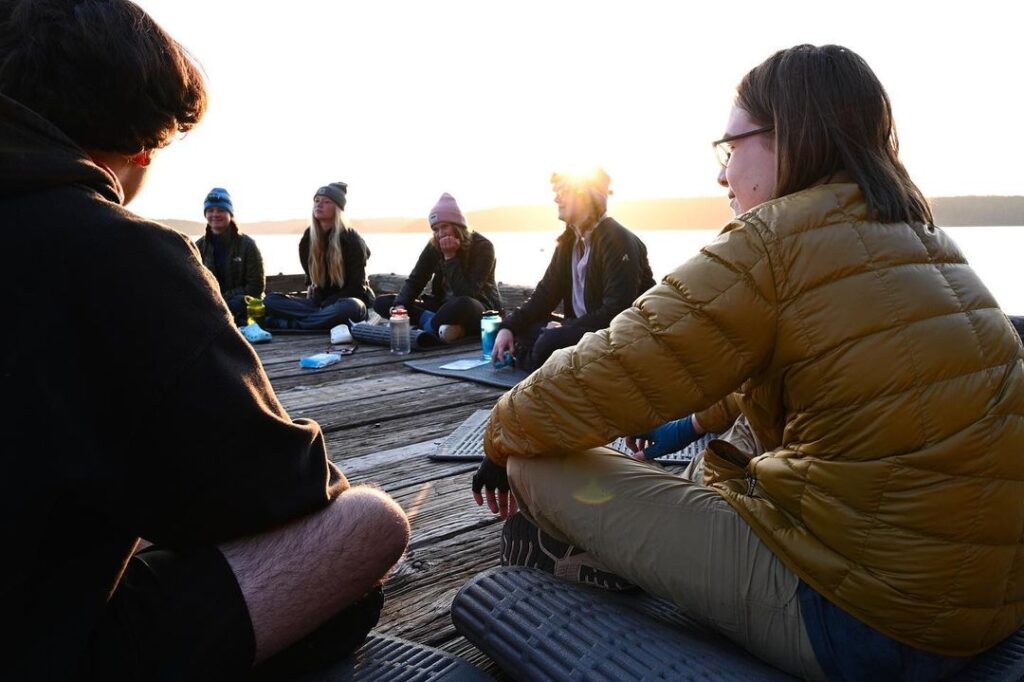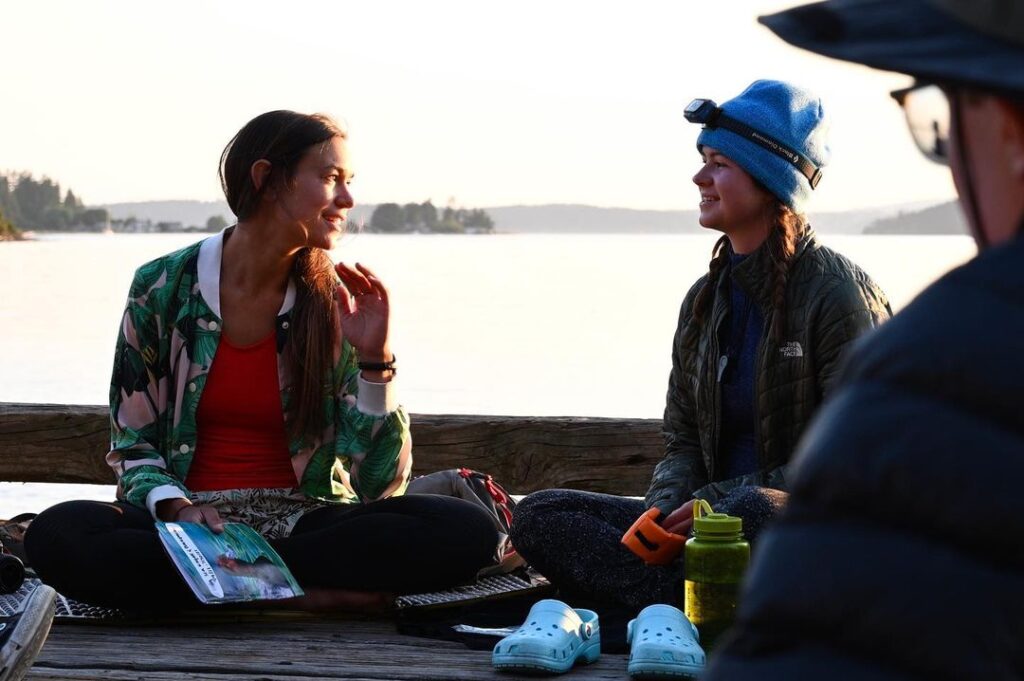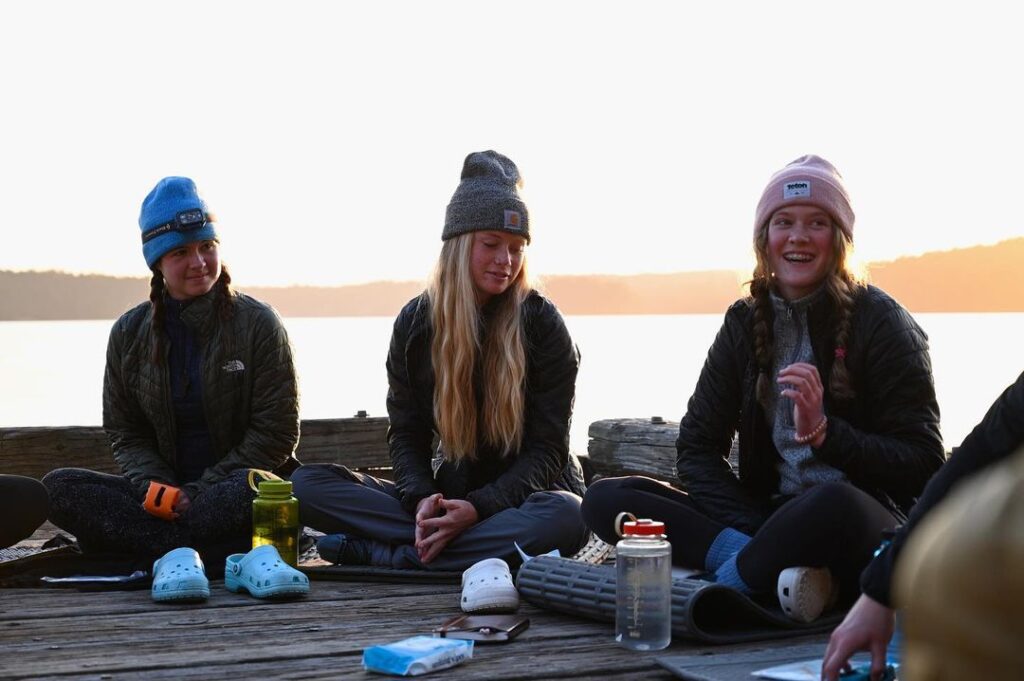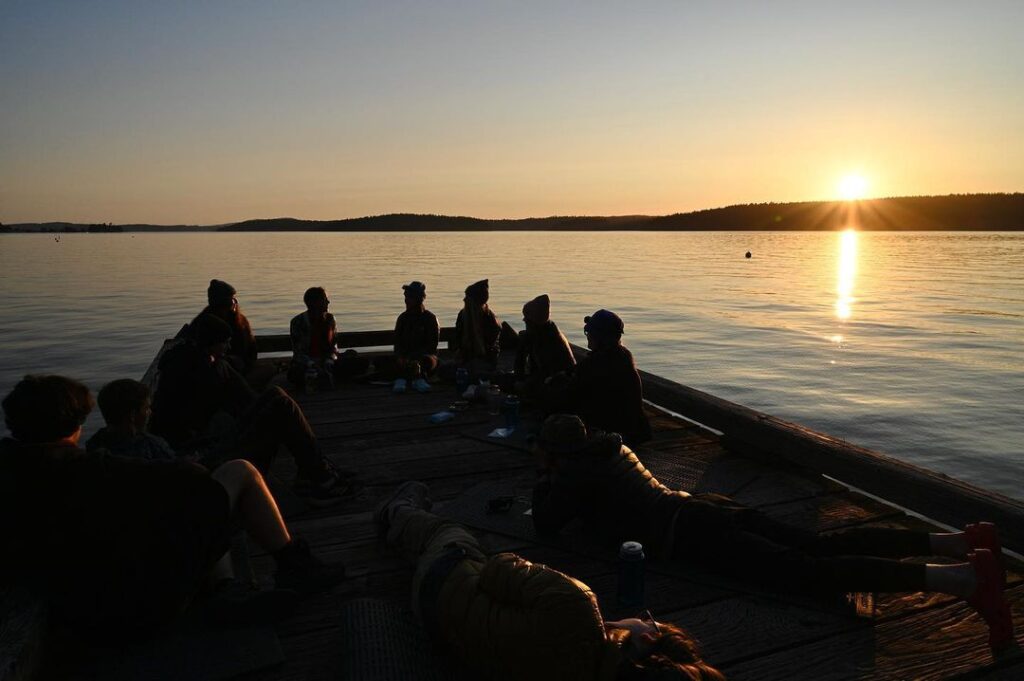Building a strong and immediate feedback culture is one of our not-so-secret tricks to creating a space where students can grow and succeed as a team.
One thing said about experiential education is that you get the test first and the lesson later. When a group embarks on their Outward Bound expedition, certain things need to start happening right away. The machine needs to work. Lifting gear that requires two people, like a canoe, starting a fire on a rainy day, reading a map and making decisions about where to camp – these tasks all begin with the expedition. Unlike a new team at the office or the first few days in a new school, there’s not always time to get to know each other first before communication needs to start happening and tasks need to be accomplished. Test first, lesson later.

Photo by Anna Sand
Building a Positive Feedback Culture on Outdoor Expeditions
Building a strong and immediate feedback culture is one of our not-so-secret tricks to passing the test. “Feedback” has gained enough traction that many workplaces will claim in interviews and new-hire orientation to value it highly, but in reality, the structures to give feedback are often missing. What does feedback really look like when it’s happening every day?
Feedback is letting people know what’s working well and what isn’t. By making feedback a part of everyone’s day, we normalize it so that no one feels singled out and so that everyone has a voice. Many of us come from cultures where we aren’t used to giving ourselves positive feedback, so that’s often our starting point.
Positive Feedback
Each evening, in recapping the day, everyone is expected to share something they did well at or that they’re proud of. While it can feel uncomfortable at first, it establishes a baseline of honesty and appreciation – we all worked together today, and we know generally what went well and what didn’t. In assessing our own performance accurately, we build trust that we can give effective feedback to others.
From there, it’s a natural step toward giving positive feedback and affirmations to teammates – a step that’s often easier and more familiar. However, for the times when it’s been a tough day and tensions ran high or mistakes were made, making the space to appreciate each other can feel radical but necessary before facing the challenges of the next day.

Photo by Anna Sand
Constructive Feedback
After we’ve established a structure for positive feedback, it’s not surprising to the team that we start to build a structure for constructive feedback. “Constructive” focuses on the future and what can be improved, rather than just identifying what went wrong.
As with positive feedback, we start with ourselves. We practice sharing something we could have done better. It doesn’t mean we did poorly at the task, only that we continue to strive for excellence, which is never achieved. We’re all lifelong learners, including Instructors, and we strive to lead by example and when appropriate, share what we’re still working on.
When we’re ready to give constructive feedback to our peers – and several days into the expedition, circumstances usually have presented themselves – we have several tools to put to use. Many of us find it stressful to give constructive feedback, especially if we’re upset or frustrated. Tools help us slow down and follow a script until we’re comfortable enough to go it alone.

Photo by Anna Sand
CFR (Concern, Feeling, Request)
One feedback tool we frequently use, the CFR format (Concern, Feeling, Request), begins with explaining your perspective of what happened and sharing your feelings – how what happened affected you. One example might sound like, “My concern is that your job last night was to put the packs under the tarp, but you left them out, and consequently, they got rained on. That made me feel frustrated because I don’t like a wet pack, and I did my job, which was washing the group dishes.”
By following these simple steps, we make sure that everyone is aware of the source of tension, and we’re letting the person receiving feedback know how their actions affected the team. Finally, the feedback giver can suggest a solution or request what they’d like to see in the future. By focusing on solutions, this tool helps us avoid venting or debating. “My request is that next time you, make sure all of the packs get under the tarp in case it rains.”
Giving and Receiving Feedback
Giving feedback takes practice, and so does receiving it gratefully. Instructors work to facilitate appropriate timing – some situations need to be addressed immediately before anything else happens, and other times, waiting until tempers have cooled off is better. Instructors can help students prepare and practice giving their feedback privately, and can help them debrief and process the feedback after it’s received. Giving feedback doesn’t guarantee a fixed problem, but it is a foundational piece in creating a culture of open, honest communication and conflict resolution.

Photo by Anna Sand
Transferable Tools for Building a Feedback Culture
When you’re half a dozen or more strangers traveling through the woods with little outside contact, conflict and disagreement are bound to arise and are not inherently negative things. We teach students of all ages to tackle these situations head-on, and each team member returns to their own life better prepared to give and receive feedback. Of course, none of the tools we use are specific to our group or setting – they can apply everywhere. It can be more challenging to make sure everyone in your “team” truly values and is open to feedback, and to carve out the time and focus for it. Just as we do in the woods, celebrating our successes and appreciating each other every evening is a great place to start!
Inspiring Bold Futures
Learn more about how students are finding success in school, work and life by discovering their personal potential through Outward Bound’s local and regional outdoor education programs.
About the Author
Renee Igo was an Outward Bound student at age 15 and has been instructing wilderness expeditions for the Voyageur Outward Bound School for the past eight years. When not instructing, she holds a variety of other teaching positions and raises sheep in Maine.




